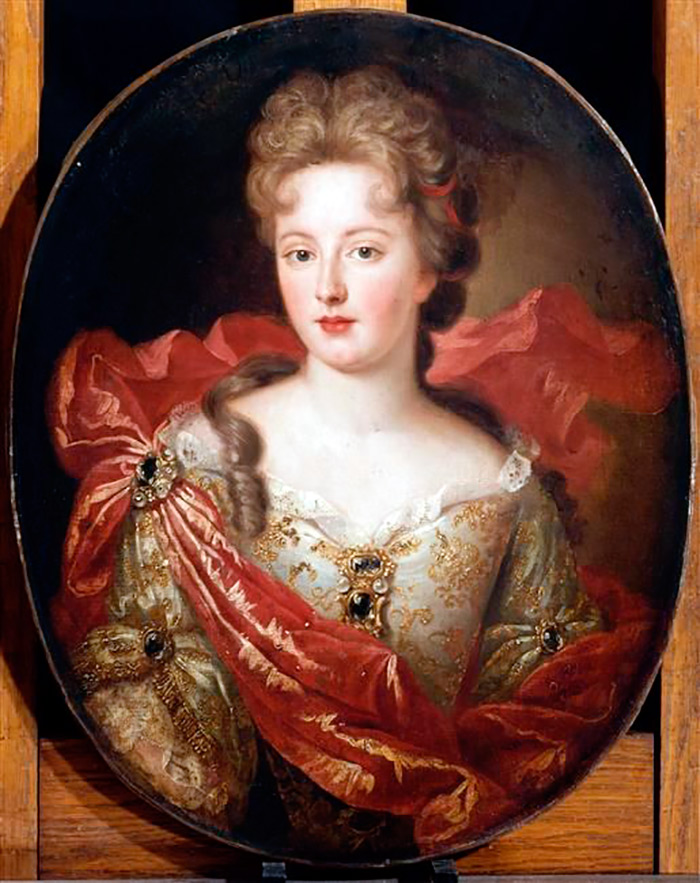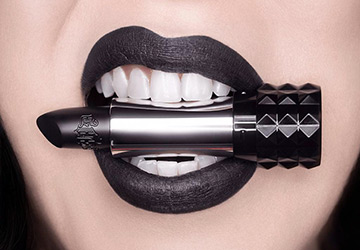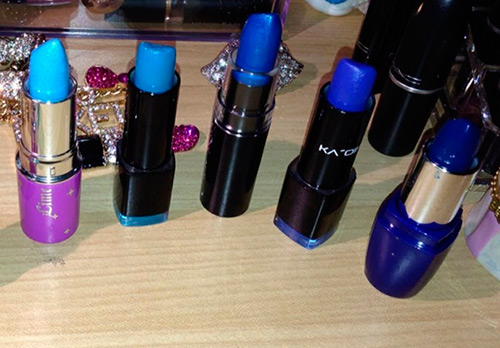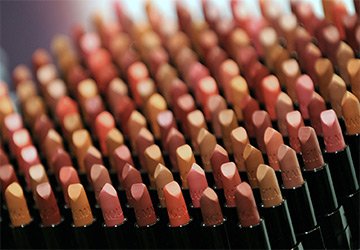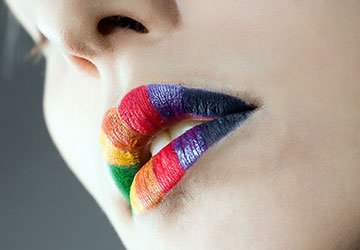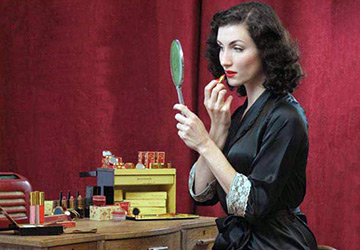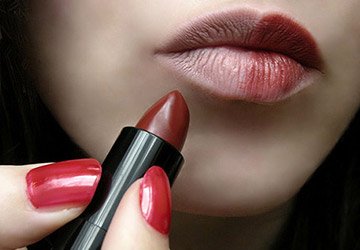Fashion history
Lipstick
history from antiquity to matte and long-lasting lipstick
When did the first lipstick appear? How did they paint lips in Ancient Egypt and did they paint at all? What is lipstick made of? And why exactly red?
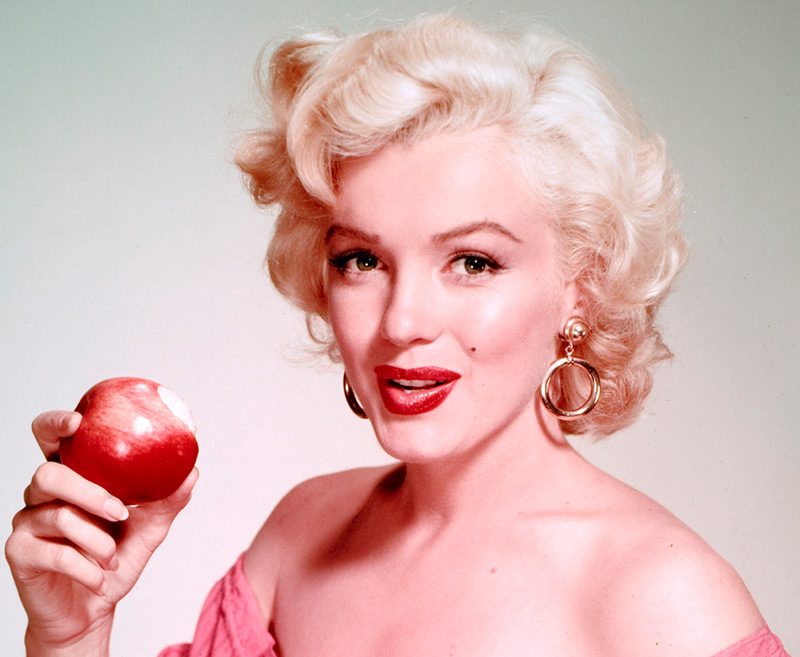
Marilyn Monroe
In this article we will tell you about how and with what women in different countries of the world have painted their lips over the centuries, as well as about what lipstick is today.
Lipstick - means for coloring lips, the word "lipstick" comes from the Latin "pomum" - apple
The history of lipstick from ancient Egypt to the twentieth century
Ancient Egyptian style makeup popular to this day - eye accent, stunning long arrows. Indeed, what could be more beautiful than a cat's eyes. But not only black eye paint was known in ancient Egypt.
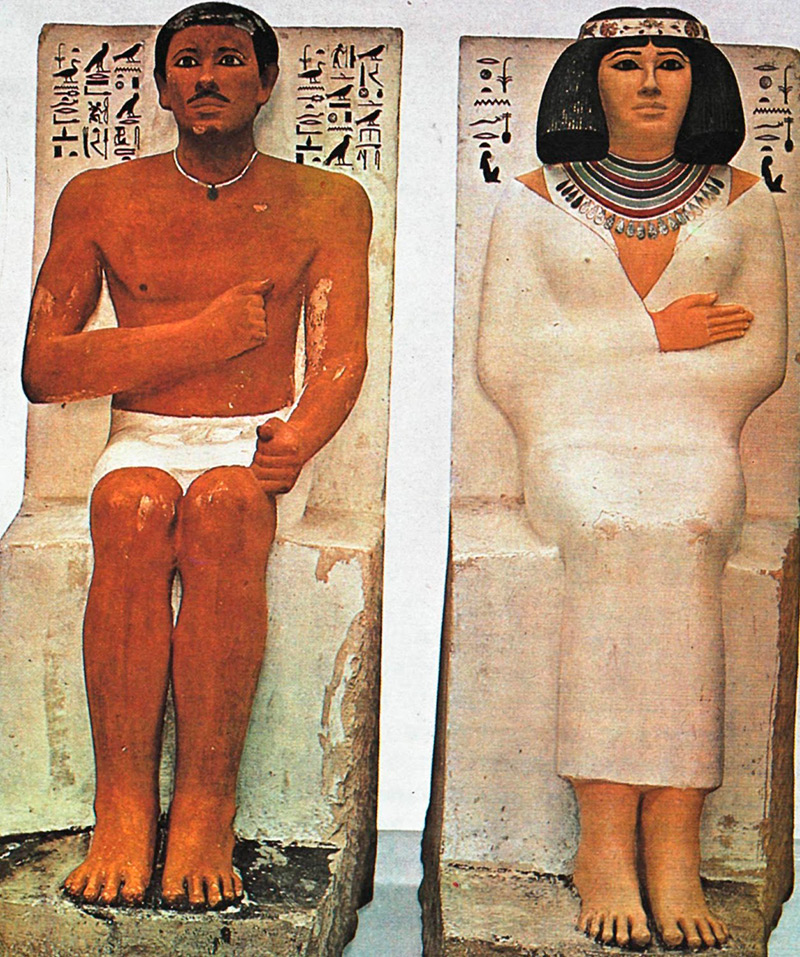
Statue of Rahotep and Nofret
Ancient Egypt
The ancient Egyptians were real masters in the construction of the pyramids, and in medicine, and also in makeup. Lipstick was also a must-have for women in Ancient Egypt. If the eyes were painted on the basis that the eyes are the mirror of the soul, and evil spirits can penetrate into the body through the eyes and take possession of a person, then nothing is known about the religious purpose of lipstick in Ancient Egypt.
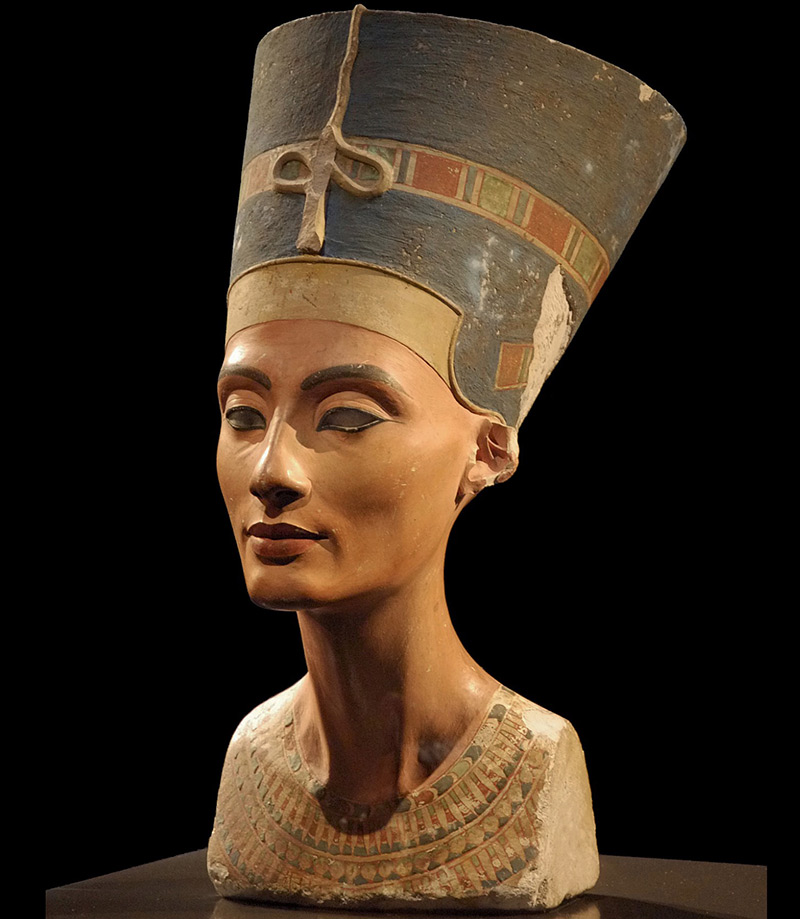
Bust of Nefertiti
Lipstick was applied to the lips in order to give them shine. As a lipstick, the Egyptian used a mixture of fat and red ocher. Perhaps, in hot climates, such lipstick could also serve as a protection for the lips.
Ocher is a naturally occurring pigment consisting of iron oxide hydrate mixed with clay (yellow ocher) or a mixture of anhydrous iron oxide and clay (red ocher).
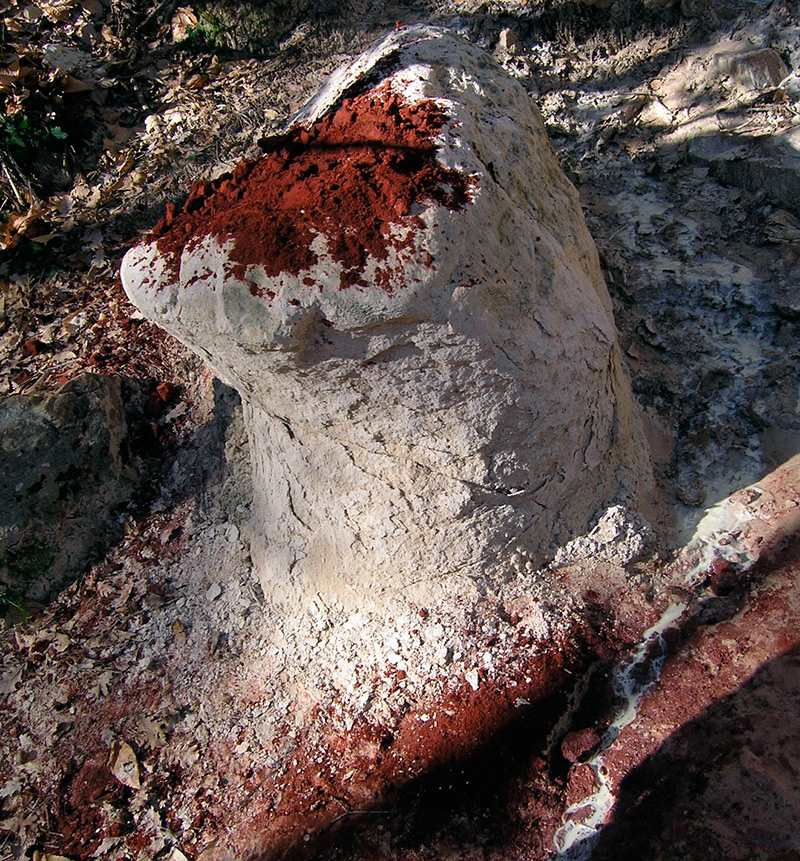
Ocher
Ocher is one of the most ancient colors. And not only in makeup. Primitive people, painting on the walls of caves, used ocher as a yellow-red paint. Ancient tribes painted faces and also used ocher as paint. Even today, some African tribes, painting their faces before performing certain rituals or before hunting, also do not do without ocher.
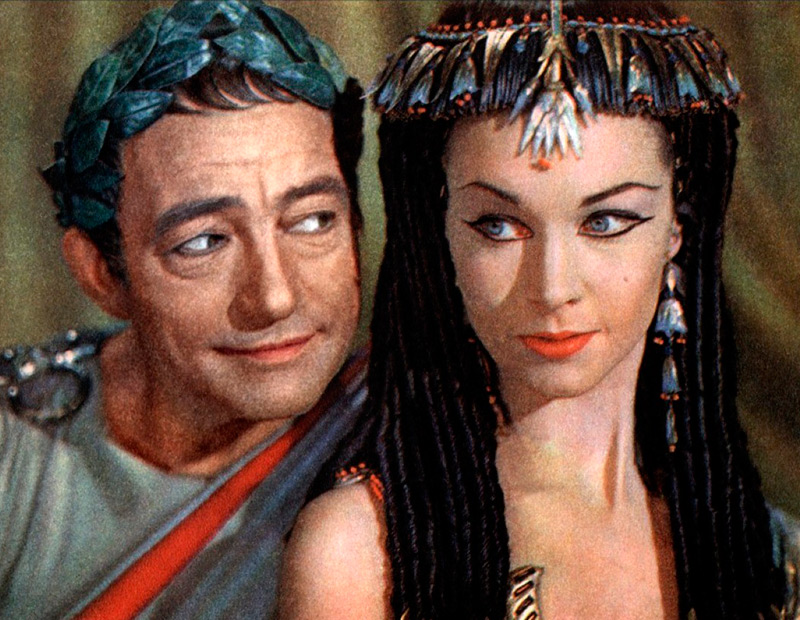
Caesar and Cleopatra
Lips were also painted by women of Ancient Greece and Ancient Rome. However, unlike the Egyptians, their makeup could not be very bright. It was believed that female housewives, mothers and wives, should be distinguished by modesty. In ancient Greece, bright makeup, if anyone was allowed, it was getters - women who accompanied men to feasts and theaters.
In ancient Rome, bright makeup, deviating from the generally accepted rules, could be afforded by women of noble birth and, of course, the empress.
Ocher was also used as a paint. Or, in Ancient Greece, the pigment is vermilion. This is cinnabar, ground into powder.
Cinnabar is a mercury sulphide, a harbinger of poisonous cosmetics of the 16th-18th centuries.
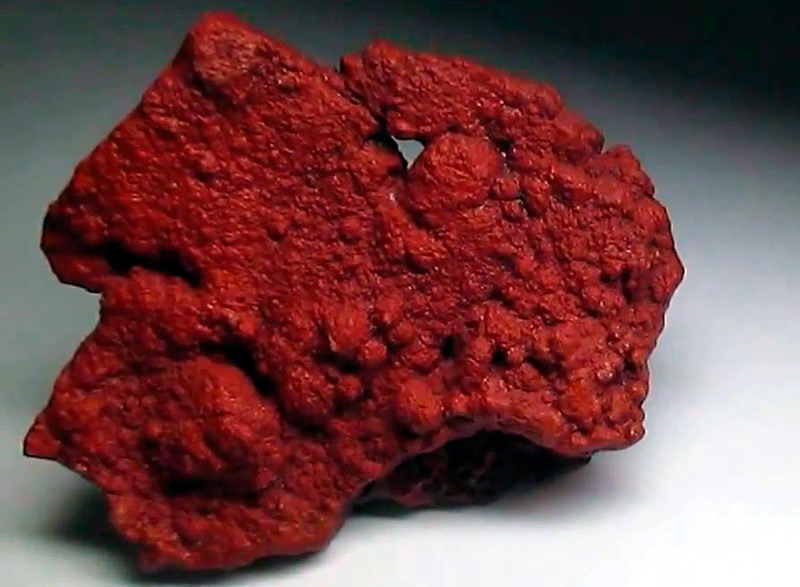
Cinnabar
Cinnabar is a Greek word that may have a Persian origin and means "dragon's blood".
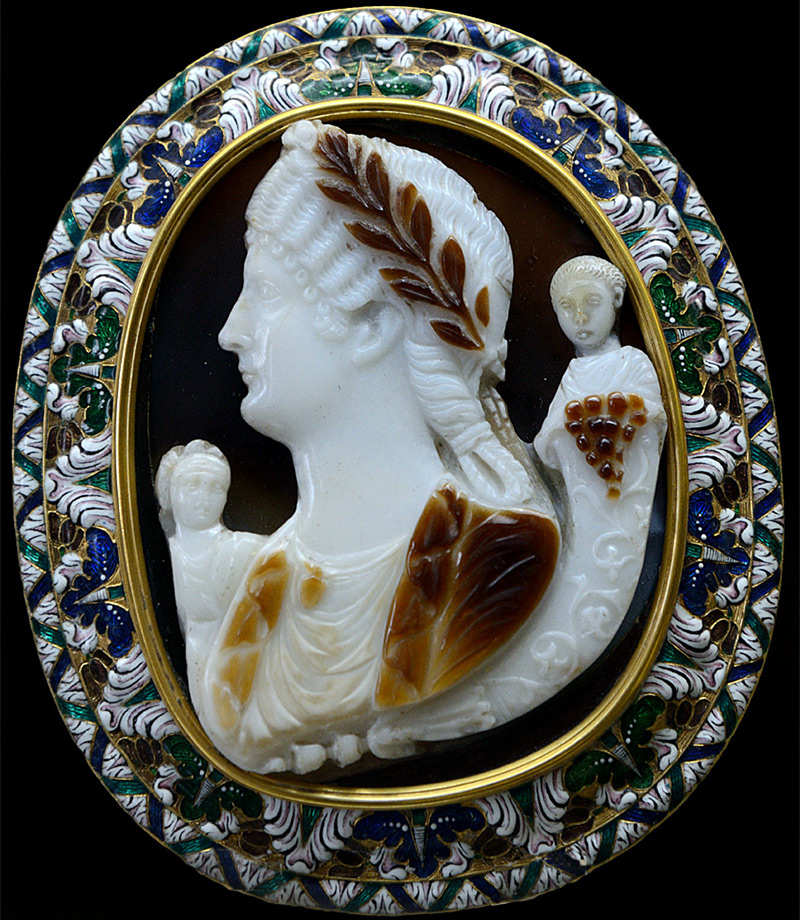
Cameo depicting the Roman empress Messalina with children
In ancient Rome, red lead, dye moss, and sanguine could also be used as red paint. Sanguine are sticks made of kaolin (white clay) and iron oxides, in other words, red chalk. Dye moss is a plant from the lichen class, it can produce red, purple and blue paint.
By the way, in Ancient Rome, according to some sources, men could also paint their lips.
In the Middle Ages in Europe, the church fought with lipstick. All cosmetics were condemned by the church as "the colors of the devil." In those days, it was believed that applying makeup meant deceiving, and lying was one of the deadly sins. And not only did they not paint the face at all in the Middle Ages (both lipstick and blush were forbidden), so even in those days appeared fashion shave eyelashes and make a high forehead, plucking hair above the forehead.From a modern point of view, an eerie sight.

Jan van Eyck
Portrait of Margaret Van Eyck, 1439
In the 16th century, during the Renaissance, women's lips become bright red again. Fashion for makeup and, of course, lipstick in France is dictated by the queen, who hails from the influential Italian Florentine family Catherine de Medici, and in England - Elizabeth I.
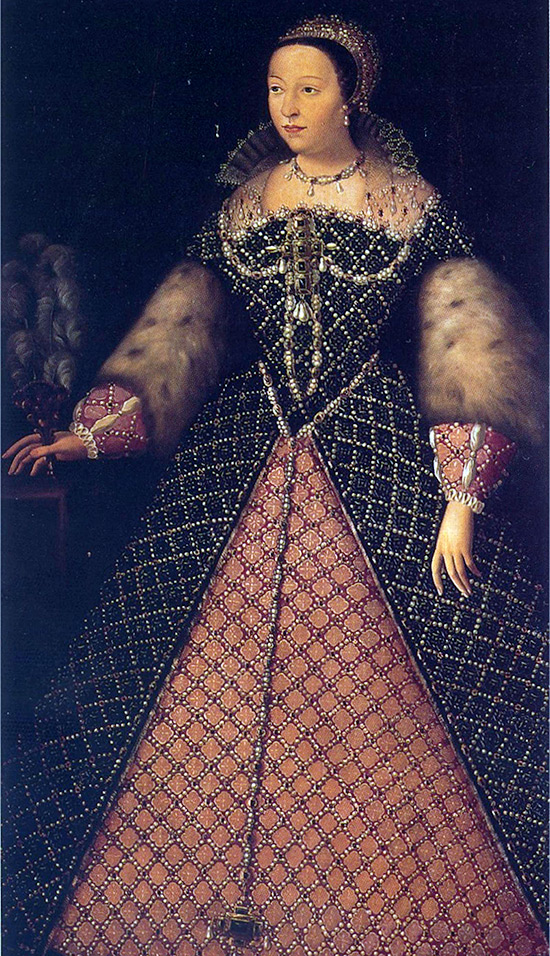
Portrait of Catherine de Medici
From the 16th century and later, in the 17th and 18th centuries, in Europe, bright scarlet lipstick and pink blush will serve to emphasize the snowy whiteness of the skin, covered with more than one layer of white.
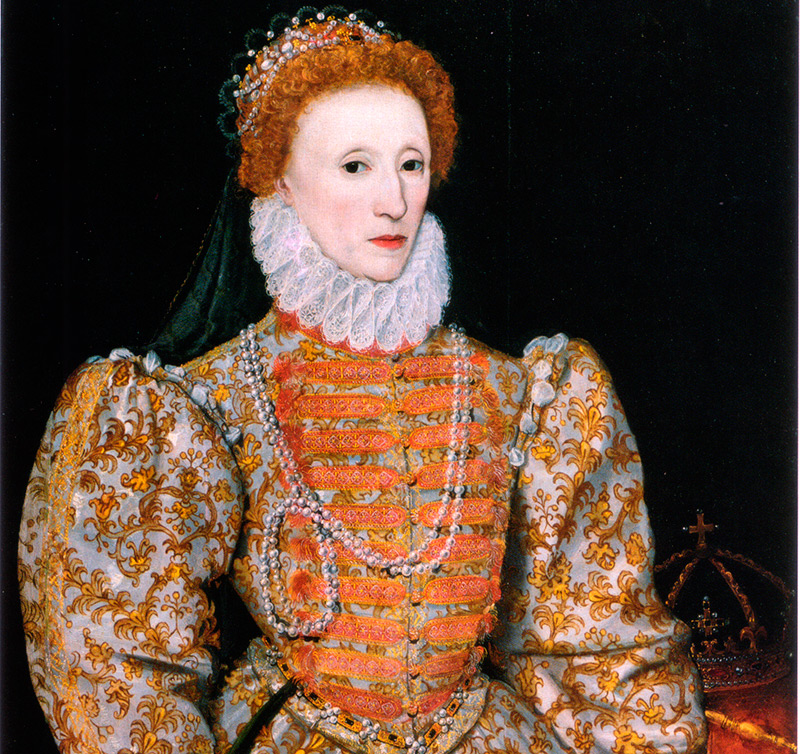
Elizabeth I
The same goes for traditional Japanese geisha makeup. Red lipstick emphasizes the whiteness of the skin.
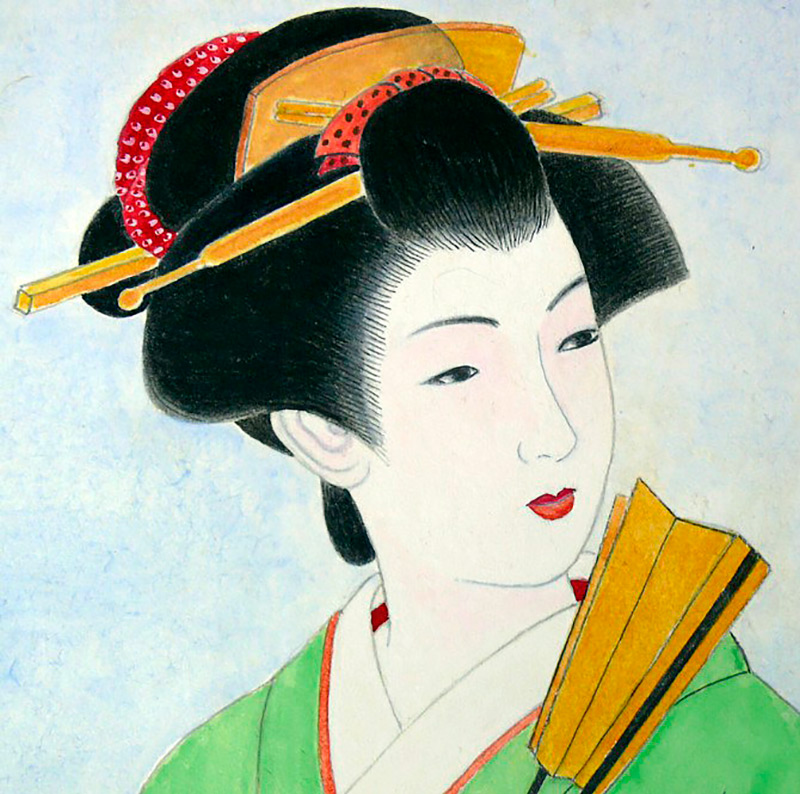
Japanese painting
Beauty with a Fan, 1927
In the 16th - 18th centuries, lipstick is still made from ocher, a poisonous mercury sulfide - vermilion, cochineal.
Cochineal is a bright red dye that is obtained from insects of the Hemiptera order called cochineal.
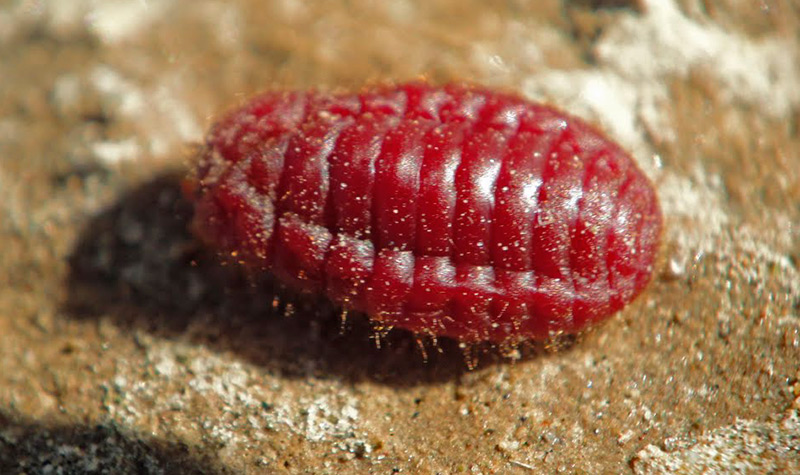
Cochineal
In the XVII-XVIII centuries. men and children also painted their lips with lipstick
By the way, in the 17th and 18th centuries in Europe, makeup was applied not only by women, but also by men. Like the ladies, the gentlemen used whitewash and blush, and also painted their lips. They also painted lips for children. However, in those days there was no separate fashion and even clothes for children. Children wore the same thing as adults, of course, only in a smaller size. Girls began to wear the same corsets at the age of 10-12. The only thing, men's and children's lipstick differed in color from women's. She wasn't that bright.
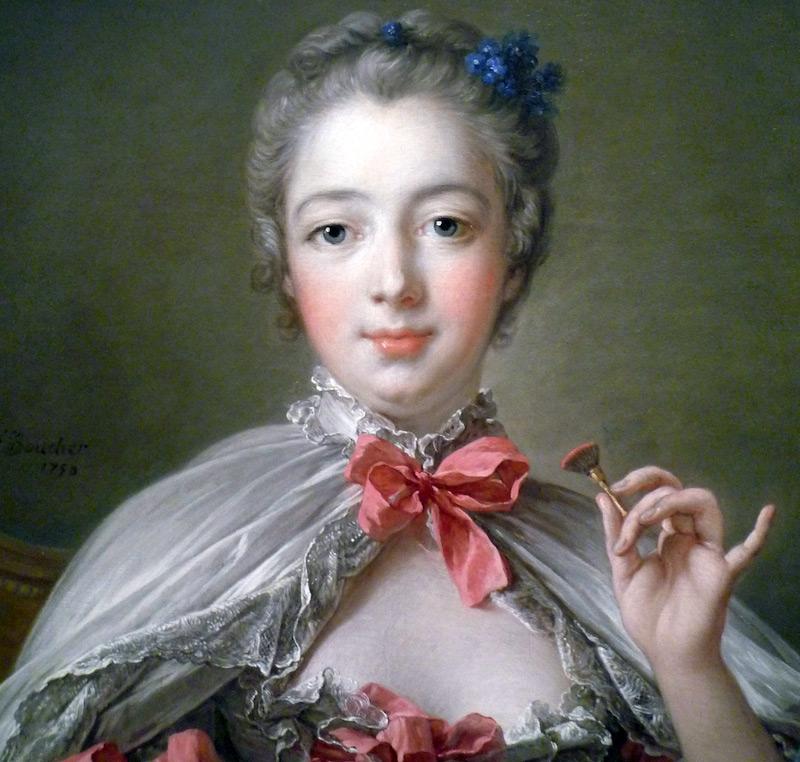
Portrait of Madame de Pompadour
Favorite of the French king Louis XV
Francois Boucher artist
The 19th century is again a time of modesty. The French luxury of balls and palaces ended in revolution. And fashion more and more begins to dictate, since the 18th century England is more modest in its outfits and make-up. And the bourgeoisie, the new influential stratum of society in the 19th century, people earning money, had a different attitude to luxury. They believed that money should be treated sparingly and put into business, not paint.
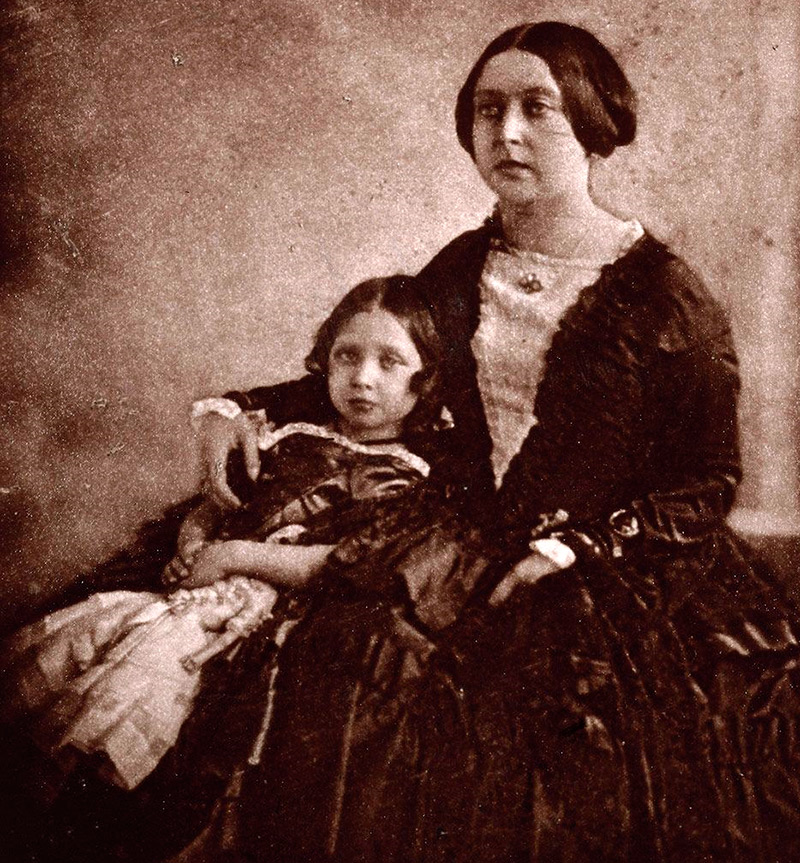
Photo of Queen Victoria of England with her daughter, 1845
The 19th century English queen, Queen Victoria, considered makeup to be a manifestation of vulgarity. In the 19th century, the idea appears that bright red lipstick, and indeed makeup, is permissible only for actresses and singers. But not for decent ladies. Young girls, in order to make their lips brighter, could only bite them.
Also, from the end of the 18th - the beginning of the 19th centuries, there are many medical works on the dangers of cosmetics, which during the 16th-18th centuries were produced from mercury and lead.
Red lipstick
“Red is the color of life, the color of blood.
I love red. "
Coco Chanel
I love red. "
Coco Chanel
Today you can buy lipstick of almost any color - from scarlet to pink, orange and even black. But over the centuries, the color of lipstick has always remained bright red.
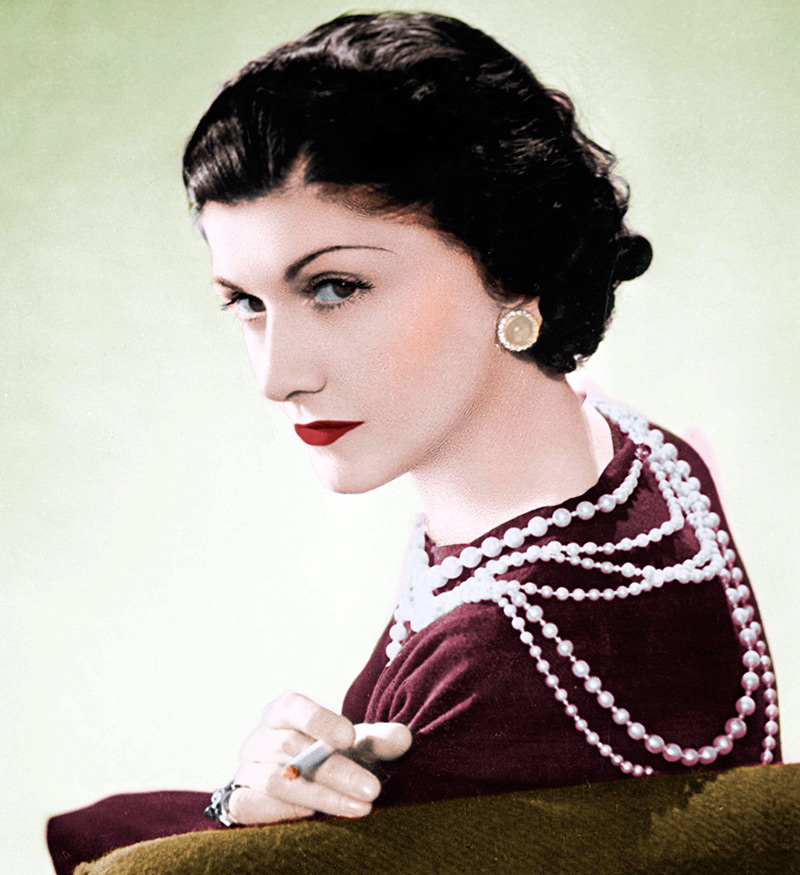
Coco Chanel
Red, black and white are the three main colors in the history of the relationship between colors and humans. It was the red, black and white colors that became the first colors that primitive people began to use as paints, both for painting on the walls of caves and for painting faces. And the American Indians generally painted with ocher not only their faces, but also bodies, for which they received their nickname from the Europeans - redskins.

Altamira cave, Spain
Drawing of primitive people
Red has many-sided symbolism. On the one hand, it is the color of life. After all, the color of our "life juice", that is, blood, is red. This is the color of the sun - the red sun. Red was often synonymous with beauty - red maiden... The traditional color of wedding dress for girls of many nations is also red. For example, in Russia people got married in a red sarafan. On the other hand, red is the color of danger and anxiety.
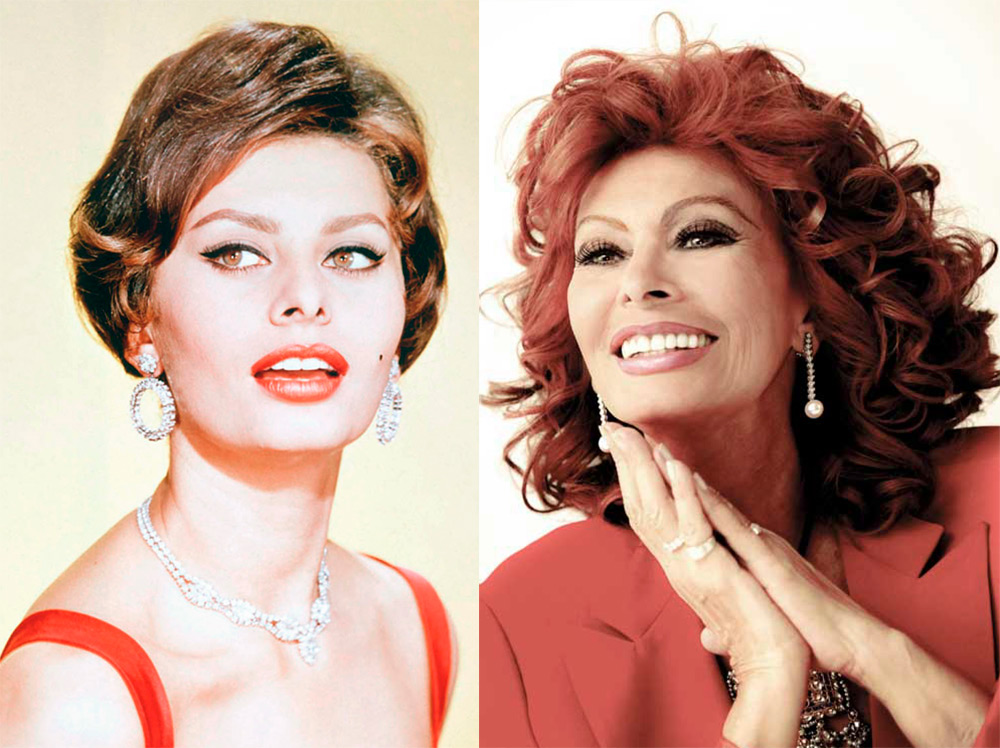
Sophia Loren
The physical properties of red are also interesting. Of all the colors of the spectrum that a person perceives, red has the longest wavelength.Thus, it evokes a stronger subconscious reaction - the red color is always visible.
And also red lips and cheeks are a sign of health and youth. As the people say, blood with milk.
Red lipstick as a symbol of the struggle for women's rights
At the beginning of the twentieth century, lipstick was still associated with actresses and singers, and even with women of easy virtue. And it was in the first quarter of the twentieth century that lipstick, as well as makeup in general, became invariable attributes of feminists - women who in those years fought for equal rights with men.
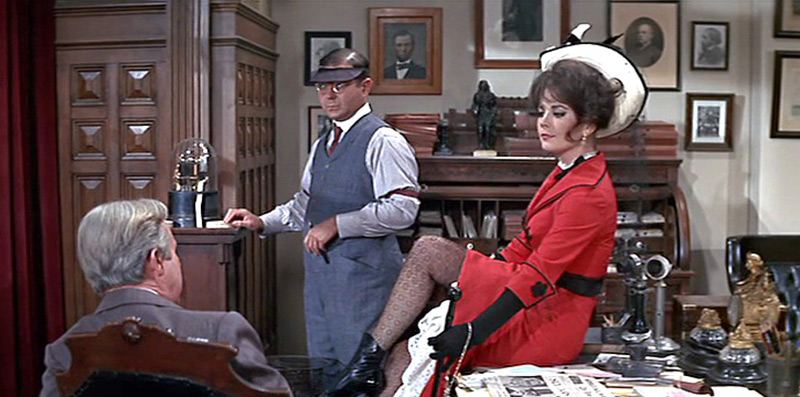
A scene from the movie "Big Races" in 1965
The main character of the film is a journalist and a feminist
So, in 1912, at a march in New York for the right to vote, all its participants came out with lips painted with bright scarlet lipstick.
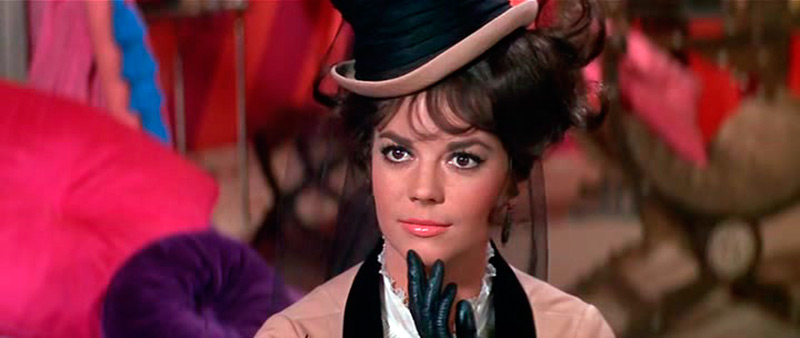
A scene from the movie "Big Races" in 1965
And in 1915 the first comfortable lipstick appeared - lipstick in a round case with levers on the sides. Prior to that, lipstick throughout its history was in the form of paint that was applied with a brush. And already in the 1920s, fashionable girls with short haircuts, leading an active lifestyle, cannot imagine their image without red lipstick.
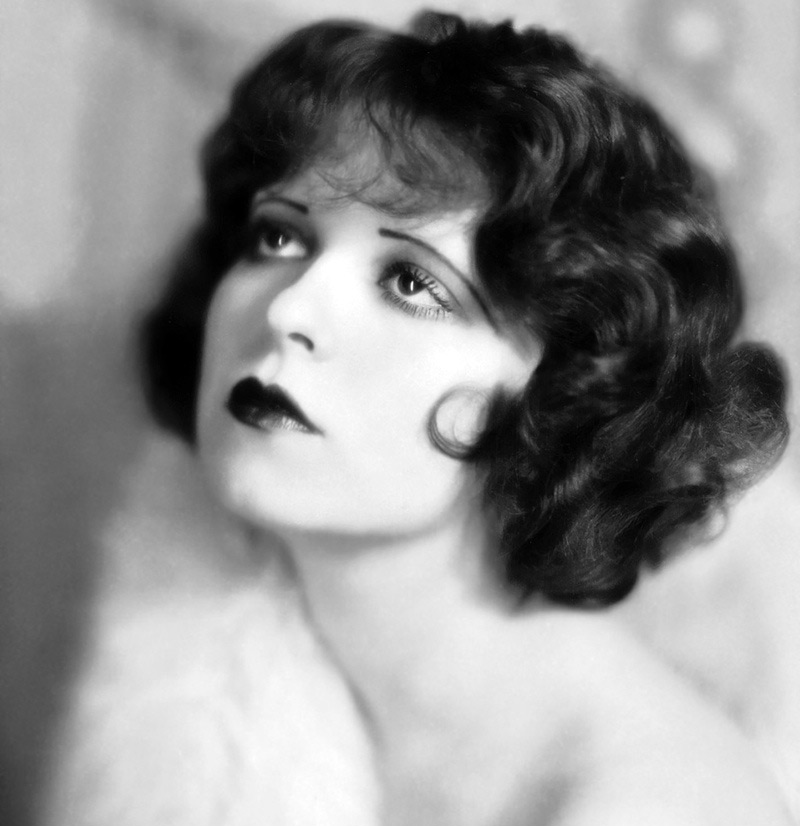
Short haircut in 1920s fashion
Almost the entire twentieth century: in the 1930s, and in the 1950s, and in the 1960s, and in the 1970s, lipstick does not go out of fashion. Becomes an item that can be found in almost any woman's purse. Even in the wartime 1940s, lipstick was still produced and sold. And in the United States, with the participation of Elizabeth Arden, the founder of the cosmetics brand Elizabeth Arden, during the war years, a red lipstick was developed to match the color of the uniform of the Marine Corps Women's Reserve.
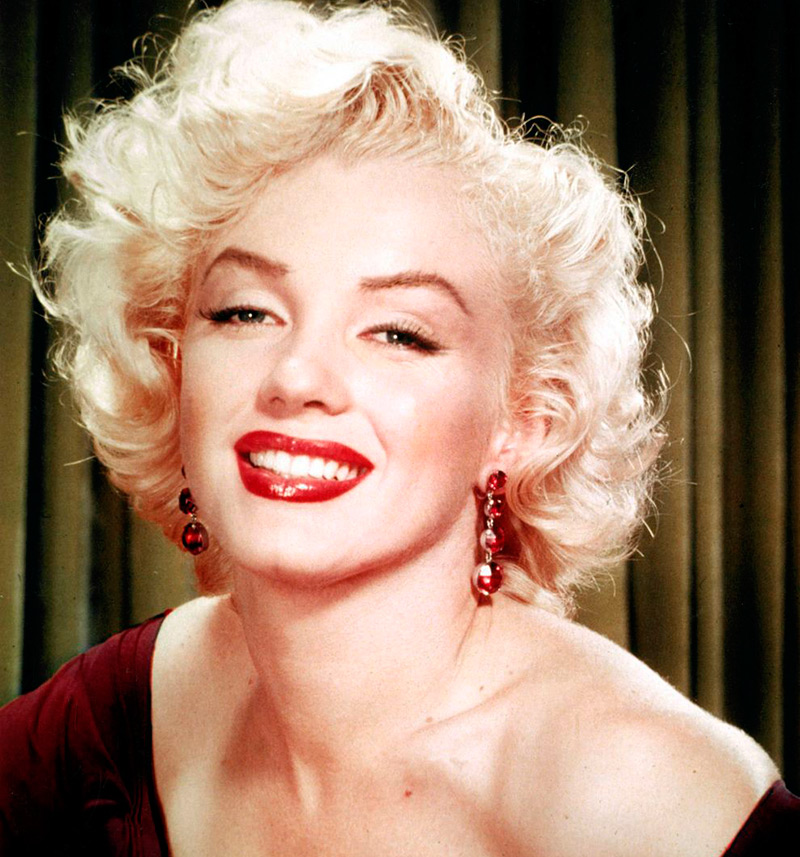
Marilyn Monroe
And only in the 1990s, lipstick for some time gave way to lip gloss. However, lip gloss is nothing more than a derivative of lipstick. The first lip gloss appeared a long time ago - back in 1932. However, already at the beginning of the XXI century, the fashion for lipstick returns again.
What lipstick is made of today
The main components of lipstick:
1. Wax - it gives it shape
2. Pigments - they betray color
3. Fragrances - they make the smell pleasant
4. Vegetable oils are the basis of the 20th century lipstick.
5. Silicone oils - make the lipstick lasting, the basis of the lipstick of the XXI century.
6. Various additives - for example vitamins, pearlescent additives, lanolin, which gives elasticity to the lips, etc.
And by the way, we eat all of the above. In the literal sense of the word. Lipstick is eaten not only by women, but also by men - when kissing.
According to French scientists, men eat up to 3 kg of lipstick in their lifetime, and women - up to 8 kg.
In the twentieth century, lipstick was most often made from vegetable oil, for example, castor oil, wax and, of course, pigments that gave it color. Over the years, this lipstick acquired a bitter smell, as the vegetable oil deteriorated. If you still have old lipsticks from the 70s or 80s at home, smell it and you will smell the vegetable oil spoiled from time to time.
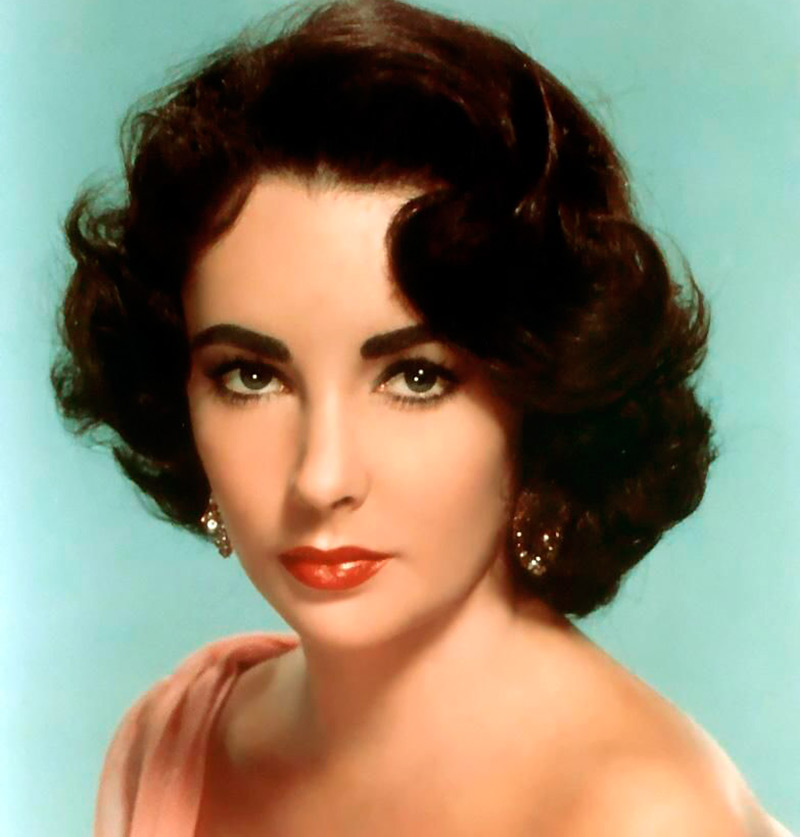
Elizabeth Taylor
The first pigment that was used in the production of lipsticks was carmine, or the good old cochineal, a dye obtained from carminic acid produced by female cochineal insects. Today, pigments are most often of artificial origin.
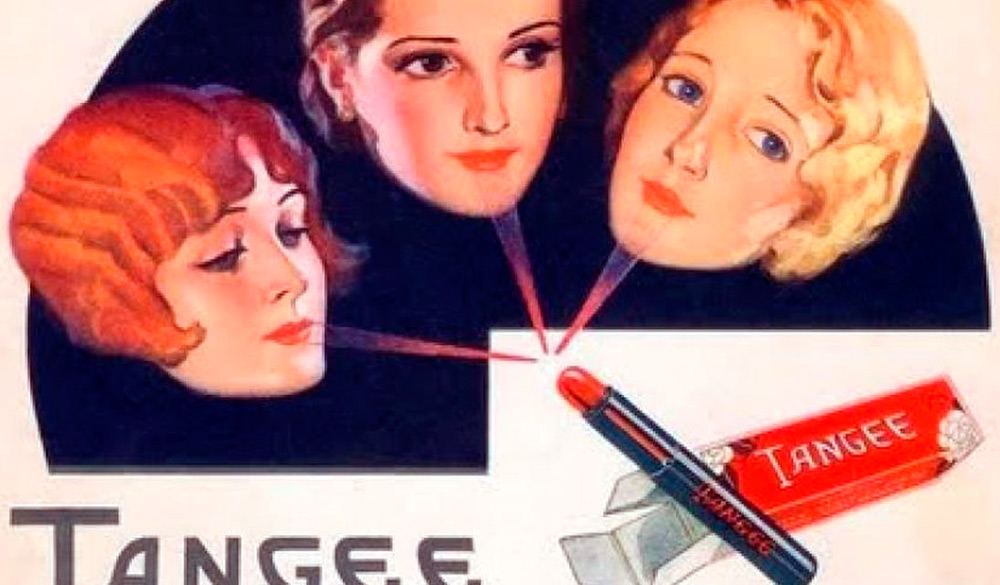
Lipstick popular in the 1920s and 1930s
Also, fragrances are added to the lipstick - a mixture of synthetic and semi-synthetic compositions, in order to give the lipstick a pleasant smell.

In the 1990s, a revolution took place in lipstick production. For a long time, they tried to make lipsticks resistant and only at the end of the twentieth century did it succeed. In the 1990s, lipsticks began to be made from wax, pigments, and silicone oil. The first such lipstick was released by Revlon. The same company was the first to offer to combine lipstick and varnish in color. However, such a product also had its drawbacks - it was only a matte lipstick and it dried the lips, since the silicone oil evaporated immediately after application.
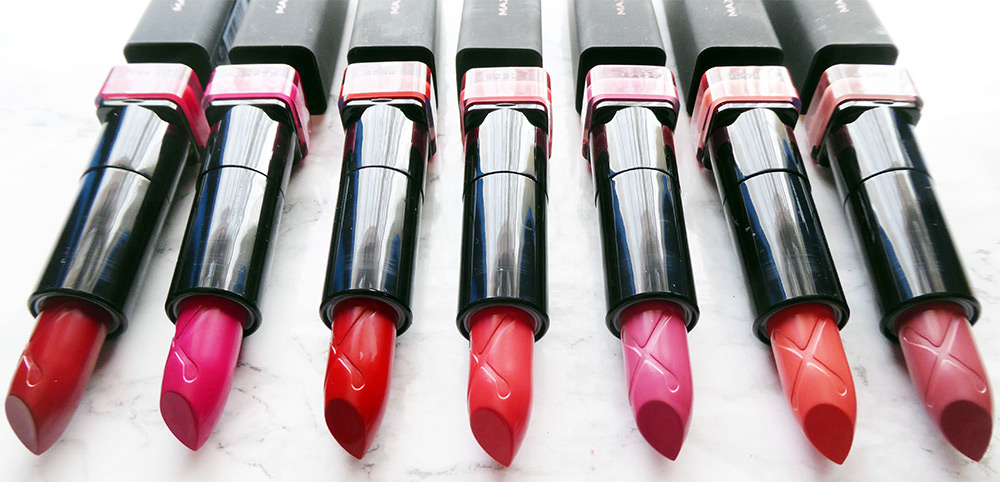
In 2000, Max Factor attempted to create a long-lasting lipstick. They created a double-sided lipstick.First, one layer was applied with evaporating silicone oil, then the second was a glossy coating with silicone oil that did not evaporate. But you must admit that double-sided lipstick, which must be applied in the correct order, layer by layer, is something very difficult.
Silicone oils are liquid organosilicon polymers, that is, silicon analogs of organic compounds, where some of the carbon atoms are replaced by silicon atoms.
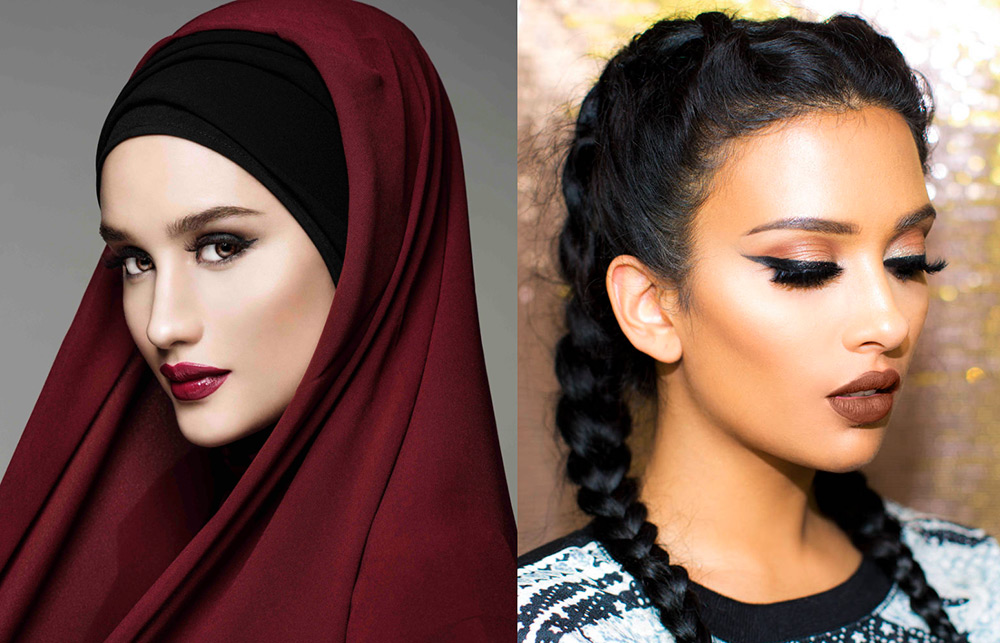
Finally, Japanese chemists have found a way to combine volatile and non-volatile silicone oils in one lipstick. Thus, the lipstick turned out to be long-lasting and at the same time did not dry the lips. The Japanese got an emulsion of silicone oils. An emulsion is a mixture of immiscible liquids. In such a lipstick, it became possible to add, in addition to pigment, wax, perfume, and silicone oils, and various additional substances. For example, vitamin E or good old vegetable oils that moisturize the lips.
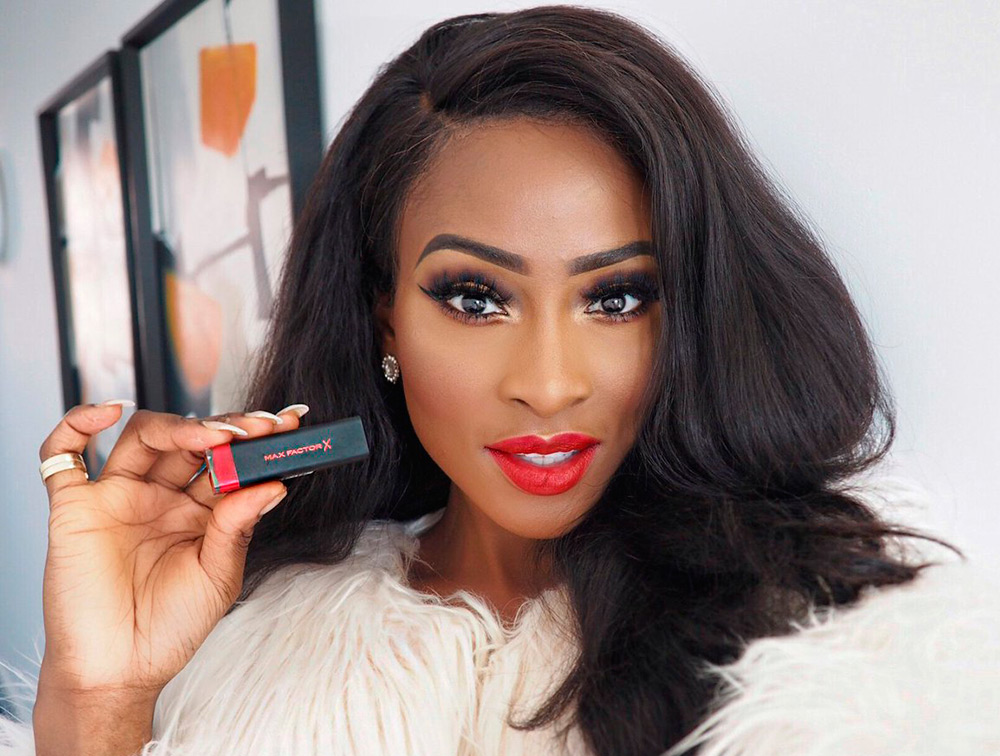
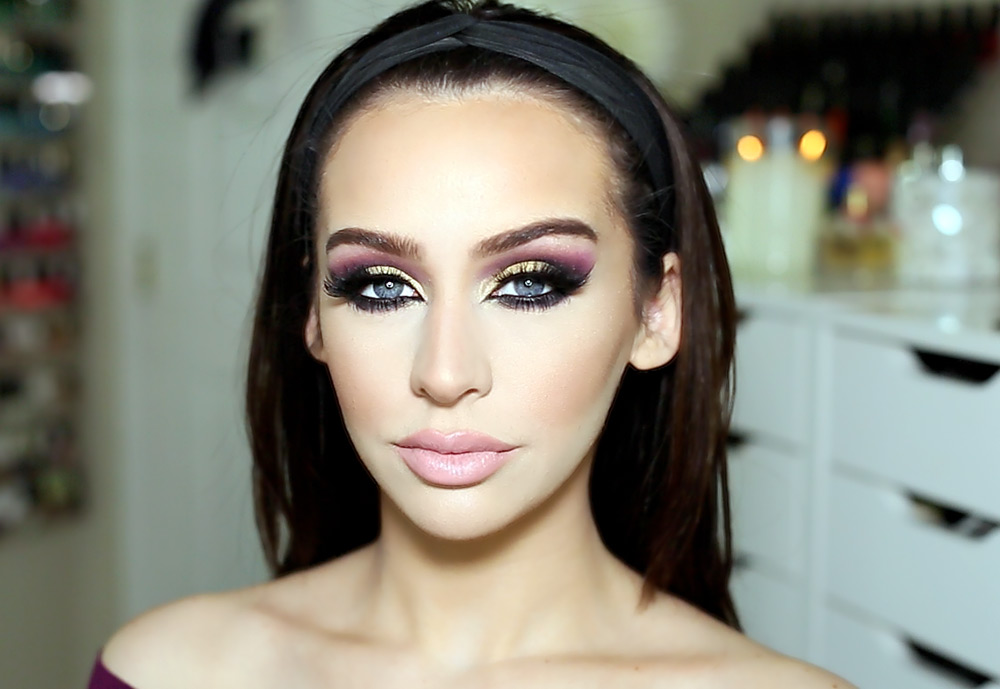
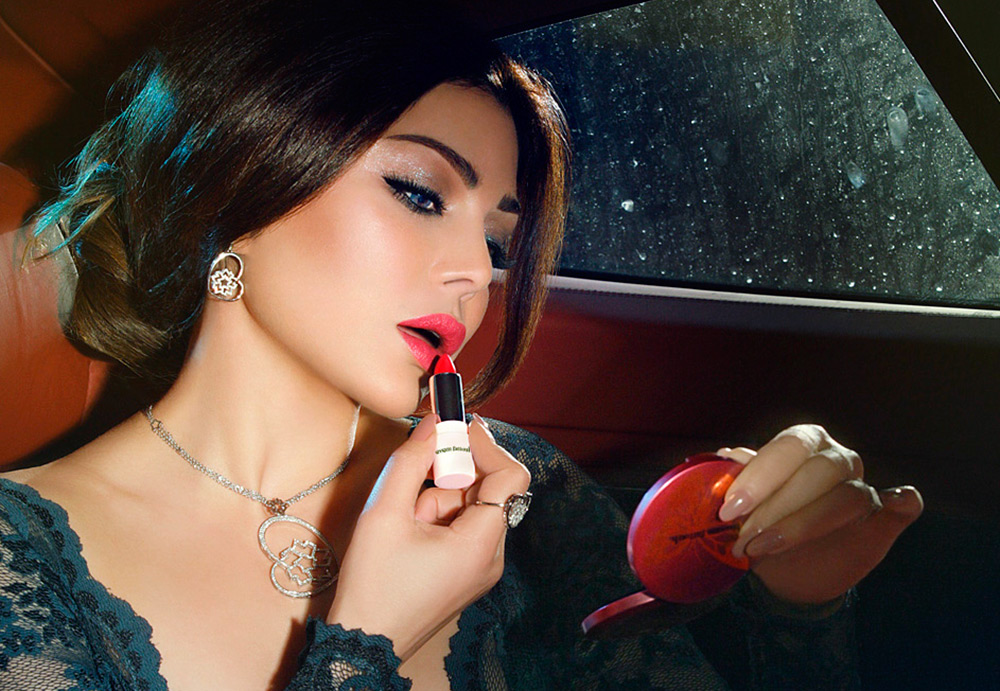
Comments and Reviews
Add a comment
Rating news
Shades of clothing that make women look younger
What shades of hair make women younger: rules and photos
Funny wedding dresses - photos and ideas
12 most expensive down jackets for the winter
How to look 25 at 40: tips from supermodels
Beautiful schoolgirls
Anti-aging haircuts and hairstyles for women
Fashionable skirts for autumn and winter
Fashionable women's trousers for the cold season
Fashionable and stylish sandals for summer 2024
Spring-summer 2024
 Fashionable dresses and tops with thin spaghetti straps
Fashionable dresses and tops with thin spaghetti straps
 Bandana tops: how to wear stylishly and beautifully
Bandana tops: how to wear stylishly and beautifully
 How to put together the perfect men's wardrobe for the summer
How to put together the perfect men's wardrobe for the summer
 Fashionable shorts for spring-summer 2024
Fashionable shorts for spring-summer 2024
 Fashionable skirts for spring-summer 2024: a guide to online shopping
Fashionable skirts for spring-summer 2024: a guide to online shopping
 The most fashionable dresses spring-summer 2024: styles and colors
The most fashionable dresses spring-summer 2024: styles and colors
 Fashionable total look 2024: ideas of images and trends
Fashionable total look 2024: ideas of images and trends
